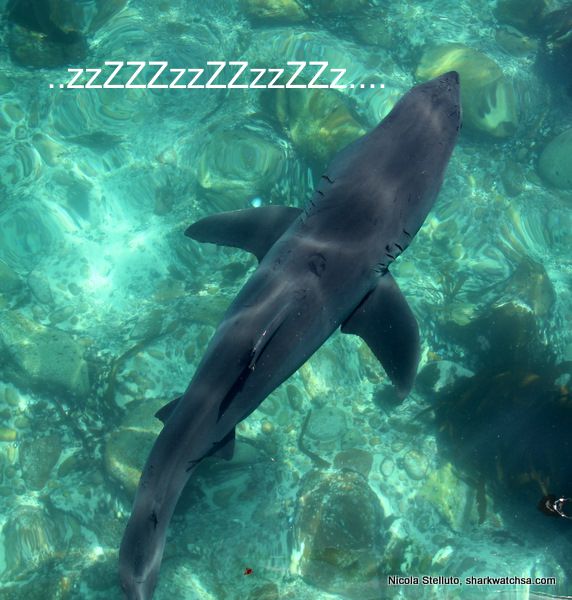How do white sharks sleep?

Shark sleeping patterns have puzzled scientists for many years. All sharks extract oxygen from the water with their gills, and to do this water must move over and past their gills. This is called "ram ventilation." To work around this, many sharks developed spiracles, a little 'nostrile' type opening behind the eye, which they can use to pump water over their gills even when sitting still. During the process of divergence from ancient shark to modern speed machine, white shark spiracles became small to non-existant. Because of this, white sharks are considered obligate ram ventilators, which means they must constantly move in order to move water over their gills to breath.
But surely, an animal must rest. While we haven't observed it in the water ourselves, the Dyer Island Conservation Trust has documented tracks of white sharks that they think are resting. While tracking tagged white sharks, we noticed a few sharks would find small gullies and sit stationary for long periods of time - some for hours - most probably sitting face first into a current letting water still pass over their gills without having to move. This could be a form of white shark resting, but we'll have to dive down and see it ourselves to be sure (and hope we are right)!

_1420x587_crop_80.jpg)






